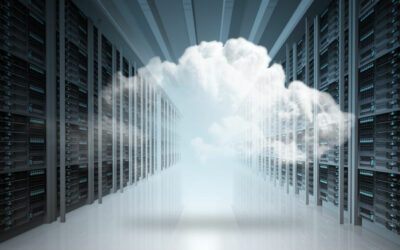Can you restore what you need to, right now?
Many companies have workloads in many places and in many forms. Split amongst virtual and physical, on-premises and cloud or multi-cloud, priority for these systems is keeping them running and available. Years ago, the “P2V conversion movement” dealt with transitioning aging physical servers into their new homes as virtual machines. This solved a number of problems, mostly hardware that was old, no longer supported, out of warranty, or simply “could not be turned off” for application reasons.
Fast forward many years, and the issue still lives. Industries, and customers, demand availability, no matter what the source. The question now becomes one of keeping things running no matter where they exist, specifically when you need to restore the system for some reason.
Can Veeam back up physical servers?
Veeam® Software, a leader in Cloud Data Management, and the pioneers of instant virtual machine recovery, provides the recovery solutions you need. Veeam started as a virtual-only solution but began offering agents for physical servers in 2017. Veeam has been able to restore any Veeam agent-based Windows into Hyper-V for a time now, but with Veeam Backup & Replication v10 released in February of this year, any Veeam-based backup of a workload can be restored as a VMware vSphere virtual machine. According to Veeam’s documentation, this includes:
- Backups of VMware vSphere virtual machines created with Veeam Backup & Replication
- Backups of vCloud Director virtual machines created with Veeam Backup & Replication
- Backups of Microsoft Hyper-V virtual machines created with Veeam Backup & Replication
- Backups of virtual and physical machines created with Veeam Agent for Microsoft Windows or Veeam Agent for Linux
- Backups of Nutanix AHV virtual machines created with Veeam Backup for Nutanix AHV
- Backups of Amazon EC2 instances created with Veeam Backup for AWS
- Backups of Microsoft Azure virtual machines created with Veeam Backup for Microsoft Azure
This solution utilizes Instant VM Recovery and a new instance of that system or workload can be up and running in a vSphere environment in minutes or even seconds, allowing you to P2V or even V2V systems easily and without additional hardware or cost, assuming you have a vSphere environment with sufficient resources available.
For Global Data Vault, this provides additional disaster recovery options and flexibility to benefit our customers.
More DRaaS & BaaS Articles
7 Online Data Storage Questions
Digital footprints increase daily; speculation is that we generate about 2.5 quintillion bytes of data per day. With that growth comes the increasing importance of data protection, not only from natural or man-made disasters but cybersecurity events and hackers as...
Webinar: The Difference Between BaaS and DRaaS
Global Data Vault is kicking off a new webinar series that takes us Back to the Basics. For our inaugural episode, we are breaking down the difference between Backup as a Service (BaaS) and Disaster Recovery as a Service (DRaaS), with a little bit of Veeam and Global...
Why every company needs DRaaS
DRaaS is insurance that you don't know you need--until you need it. If your business relies on any type of data or digital systems - and nowadays what business doesn't - then you are already well aware of the necessity of protecting data from malicious threats and...
What is Data Protection as a Service (DPaaS)?
Data protection as a service is an overarching principle of protecting data no matter where it resides and utilizes tools to protect data from various threats. We often think of backups and disaster recovery when considering data protection, but DPaaS also includes...




0 Comments